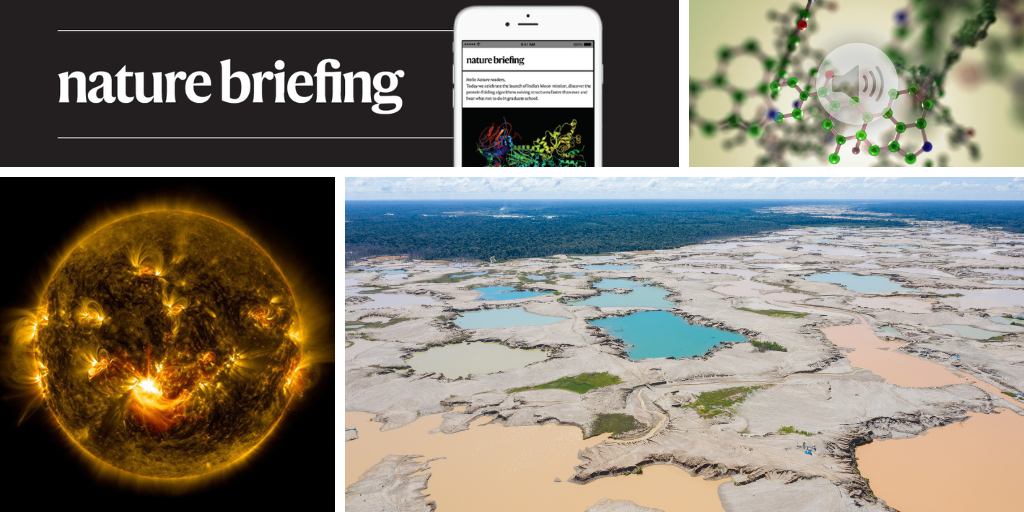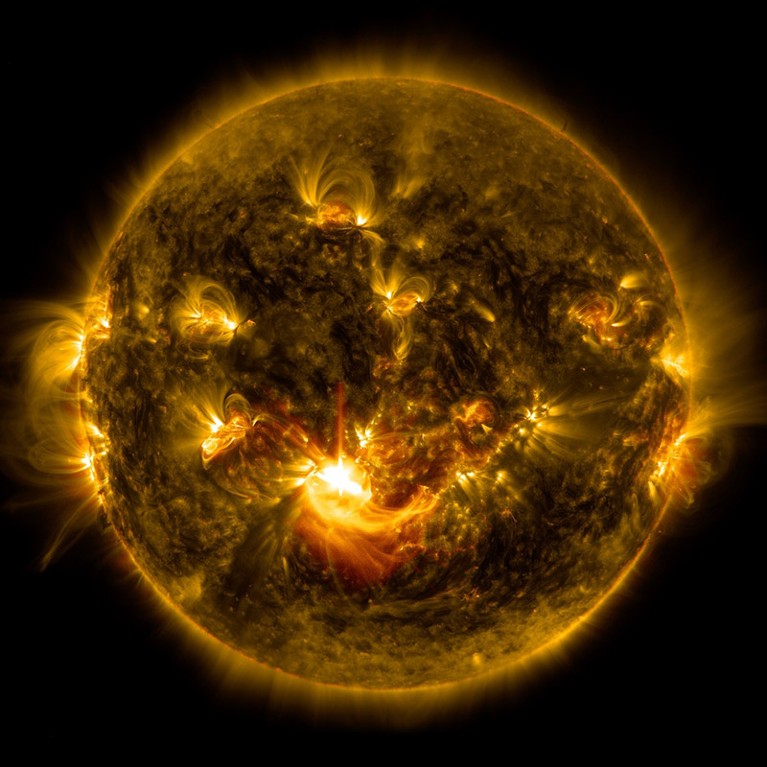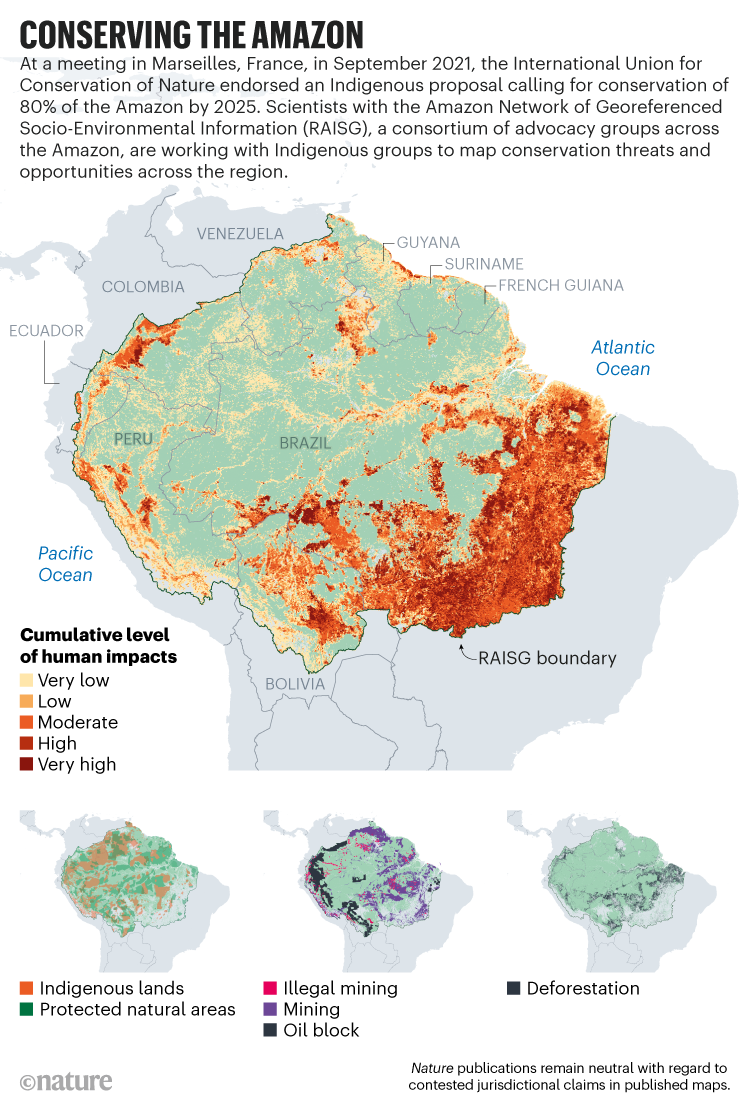Hello Nature readers, would you like to get this Briefing in your inbox free every day? Sign up here
The observatory, known by the nickname Kuafu-1, will view the Sun from its orbit around Earth.Credit: NASA/Goddard/SDO
China’s first dedicated solar observatory will provide insights into how the Sun’s magnetic field creates coronal mass ejections and other eruptions. The Advanced Space-based Solar Observatory is scheduled to lift off on 9 October. Scientists in China first pitched such a mission in the 1970s, says Weiqun Gan, an astrophysicist at the Purple Mountain Observatory of the Chinese Academy of Sciences in Nanjing, and the mission’s chief scientist. “We always wanted to do something like this,” he says.
Scientists have been collecting data on the glaciers in the high mountain ranges that run across Central and South Asia for the past 20 years to track how their size and mass has changed over time. By the end of the century, between one- and two-thirds of the region’s glaciers could melt, largely driven by atmospheric warming. This could have far-reaching consequences for the more than one billion people who depend on the river systems that are fed by the snow and glacial melt. Increased melting could erode banks, trigger landslides and catastrophic floods when glacial lakes break their banks, and make water supplies for irrigation unpredictable.
Yale Environment 360 | 8 min read
More engineers and architects are finding ways to disassemble unwanted buildings to reuse the parts. But mining the complex layers of office partitions and insulation is devilishly difficult. Some advocate for designing structures with an eye to how they will eventually be pulled apart. Others aim to construct buildings that are ultimately compostable. “We should design man-made objects and products in such a way that we’re not destroying the resources, but that we’re basically borrowing them for a certain amount of time,” says sustainable-construction researcher Dirk Hebel.
The New York Times | 24 min read
Features & opinion
Illegal gold mining has transformed a once-forested region in La Pampa, Peru, into a wasteland of sand dunes and ponds polluted with mercury.Credit: Brett Gundlock for Nature
Drug runners, gold miners and loggers are rapidly invading the remote Peruvian Amazon, home to isolated people and a wealth of biodiversity. In this rich multimedia feature, meet the researchers and Indigenous communities who are fighting to stop the destruction.
Sources: RAISG; C. Augusto/Inst. Socioambiental
Time dilation makes shore leave a shock for a space traveller in the latest short story for Nature’s Futures series.
Certain psychedelic drugs — such as lysergic acid diethylamide, or LSD — are of interest to researchers thanks to their promising antidepressant effects. To speed up the discovery of molecules with useful properties, researchers have built a virtual library of 75 million compounds related to these drugs. This approach yielded two molecules with antidepressant properties in mice, but without the hallucinogenic activity of psychedelic drugs.
Nature Podcast | 18 min listen
Subscribe to the Nature Podcast on Apple Podcasts, Google Podcasts or Spotify.








More News
Author Correction: Bitter taste receptor activation by cholesterol and an intracellular tastant – Nature
Audio long read: How does ChatGPT ‘think’? Psychology and neuroscience crack open AI large language models
Ozempic keeps wowing: trial data show benefits for kidney disease